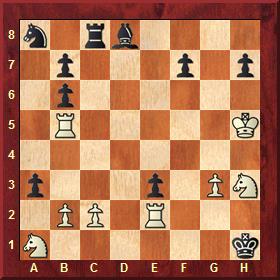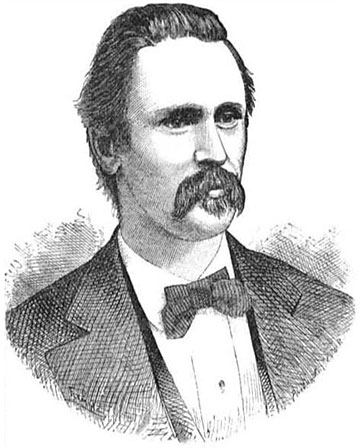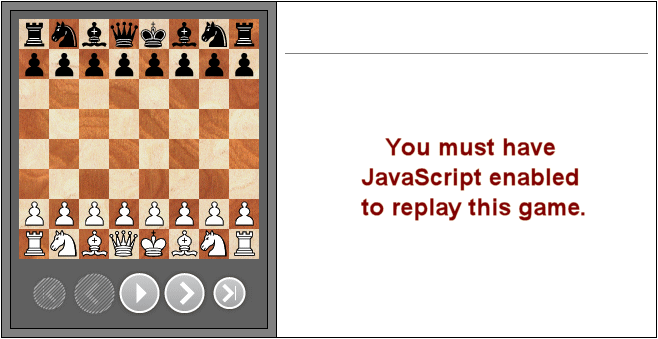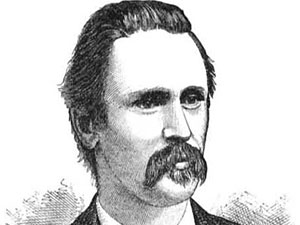The following article is taken from our puzzle section, which started
over a decade ago, but which was lost when we switch to a new content management
system and news database. We have decided to republish some of the articles.
For older readers the cherries we will pick out of the original section
will hopefully bring on nostalgic memories; younger readers will learn for
the first time what we have been up to over the years.
Sam Loyd's original Excelsior
Loyd gave Denis Julien the following position:
Samuel Loyd, London Era, 1861

Mate in five moves
Loyd's bet was that Julien couldn't pick a chessman which would not
give mate in the main line. Later he wrote: "Old Denis Julien selected
the most improbable piece, but the solution will show you which of us paid
for dinner."
You, too, dear reader, are invited to study the position and decide: which
white chess man is absolutely certain not to mate the black king on h1 in
five moves. We have given the solution to this problem at the bottom
of the page, but please, decide which piece does not mate before you look
at it). We would be interested to receive other examples of Excelsior problems
from our readers.

Samuel Loyd (January 30, 1841–April 10, 1911), the American chess
player, chess composer, puzzle author, and recreational mathematician, was
born in Philadelphia and raised in New York. As a chess composer, he authored
a number of chess problems, often with interesting themes. At his peak,
Loyd was one of the best chess players in the U.S., and was ranked 15th
in the world.
The name Excelsior for the above problem comes from a
poem written in 1841 by Henry Wadsworth Longfellow.
Solution

[Event "4/85-42 London Era"] [Site "?"] [Date "1861.??.??"] [Round "?"]
[White "Loyd, S."] [Black "Mate in five moves"] [Result "1-0"] [SetUp
"1"] [FEN "n1rb4/1p3p1p/1p6/1R5K/8/p3p1PN/1PP1R3/N6k w - - 0 1"] [PlyCount
"9"] [EventDate "1861.??.??"] {[%csl Rb2] Would you believe it? The white
pawn on b2 is going to mate the king on h1!} 1. b4 $1 ({White wanted to
play} 1. Rf5 $2 {(or 1.Rd5) and then mate with 1.Rd1/Rf1. But} Rc5 {refutes
this. After 1.b4 the threat is real.}) 1... Rc5+ 2. bxc5 $1 {Threatening
3.Rb1#} a2 3. c6 $1 {Now threatening 4.Rd5 or 4.Rf5 and 5.Rd1/f1 mate.}
Bc7 4. cxb7 Bxg3 {Or any other move.} 5. bxa8=Q# ( {Or} 5. bxa8=B#) 1-0
Frederic Friedel


























